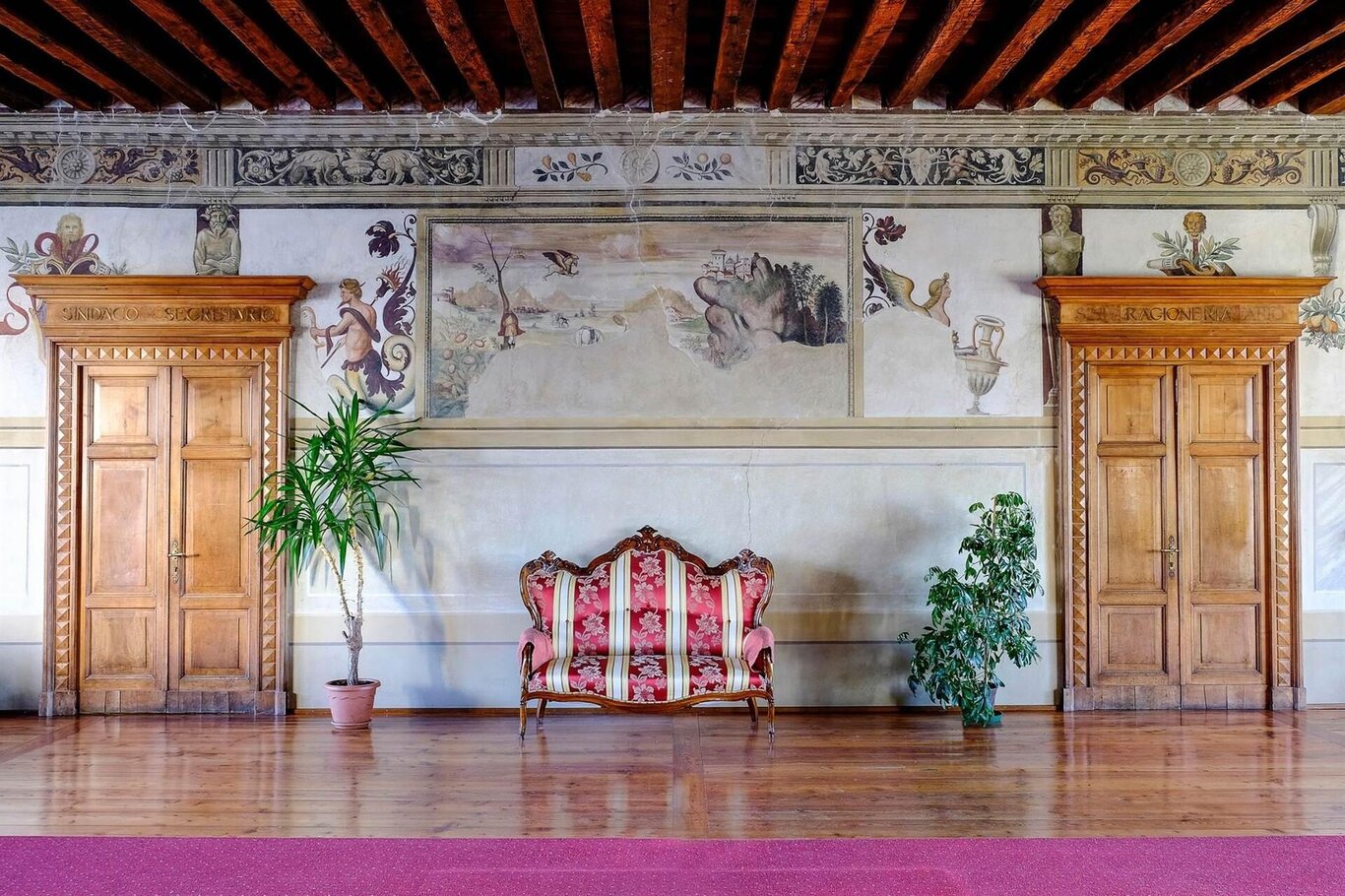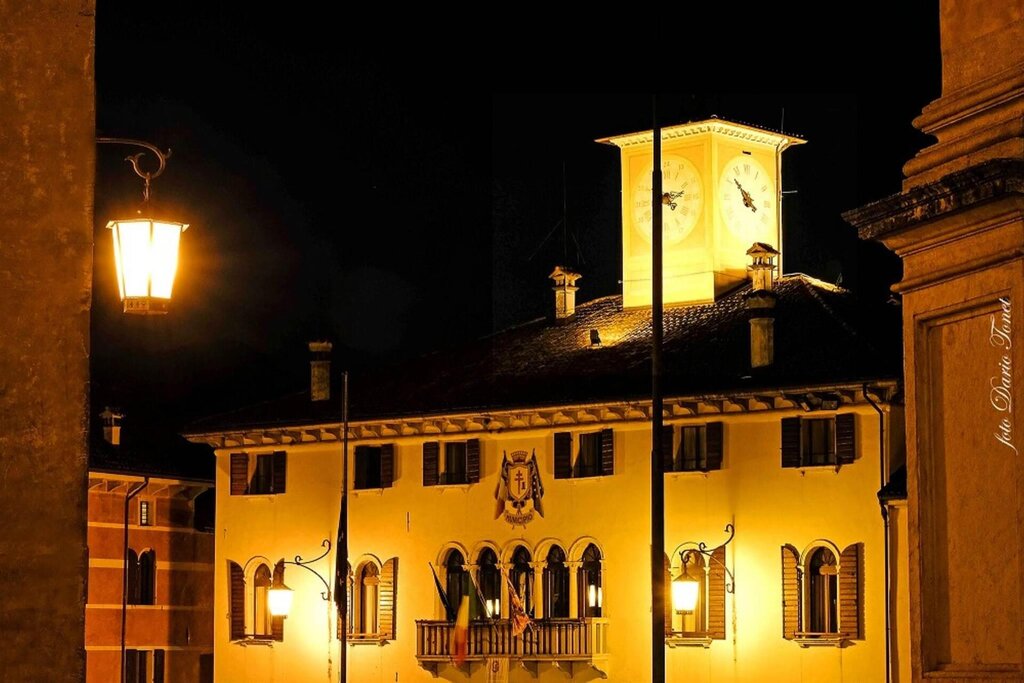The Palace of the Magnificent Community of Mel is an elegant building whose construction began in 1510 and is now the seat of the Municipality of Borgo Valbelluna.
Above the roof, a small turret is noticeable, probably painted by Giovanni da Mel or his brother Marco, in which the large clock that was originally located in the bell tower destroyed by lightning in 1756 was placed. The entrance consists of a spacious loggia with semicircular arches and cross vaults supported on the outside by columns with Ionic capitals.
One can observe the sculpted coat of arms of the Zorzi family, counts of Mel from 1422 to 1720, embedded to the right of the entrance door, and the grills of the prisons from which the condemned would hear the sentence being read in the loggia. The loggia was a large hall frescoed by Giovanni da Mel with solid wood stalls, unfortunately lost during a severe fire in 1633. Access to the first floor is via a wide stone staircase leading to the main hall of the Palace facing the square through an artistic pentafora.
It was frescoed by Marco da Mel in 1545, as can be read from the date placed above the trifora in the hall itself. The theme of the frescoes references some scenes from Ludovico Ariosto's Orlando Furioso. On the east-facing wall, opposite the entrance, the fourth canto is taken up and although the fresco is fragmentary, some characters such as the wizard Brunello tied to the tree, the hippogriff, and the castle of Atlante are evident, along with homes, fortified cities, and small horse-riding figures in the background. Above the entrance, the painter is inspired by the thirty-third canto with Astolfo on the hippogriff arriving in Ethiopia to help the king threatened by the harpies, and to the right is the palace with elegant loggias where the king and the court feast.
Majestic decorative bands follow on the wide walls.
On the wall looking towards the Prealps, the portraits of Lucrezia and Costantino Zorzi, counts of Zumelle, painted between the end of the 1500s and the beginning of the 1600s and attributed to Domenico Tintoretto, son of Jacopo, stand out.
On the top floor, the mechanism that regulated the original clock of the tower is visible. Finally, in the council chamber, two paintings by the Zumellese painter Luigi Cima can be admired.
Palace of the Magnificent Community of Mel
IRVV Catalog Number (Regional Institute of Venetian Villas): A0500001620


